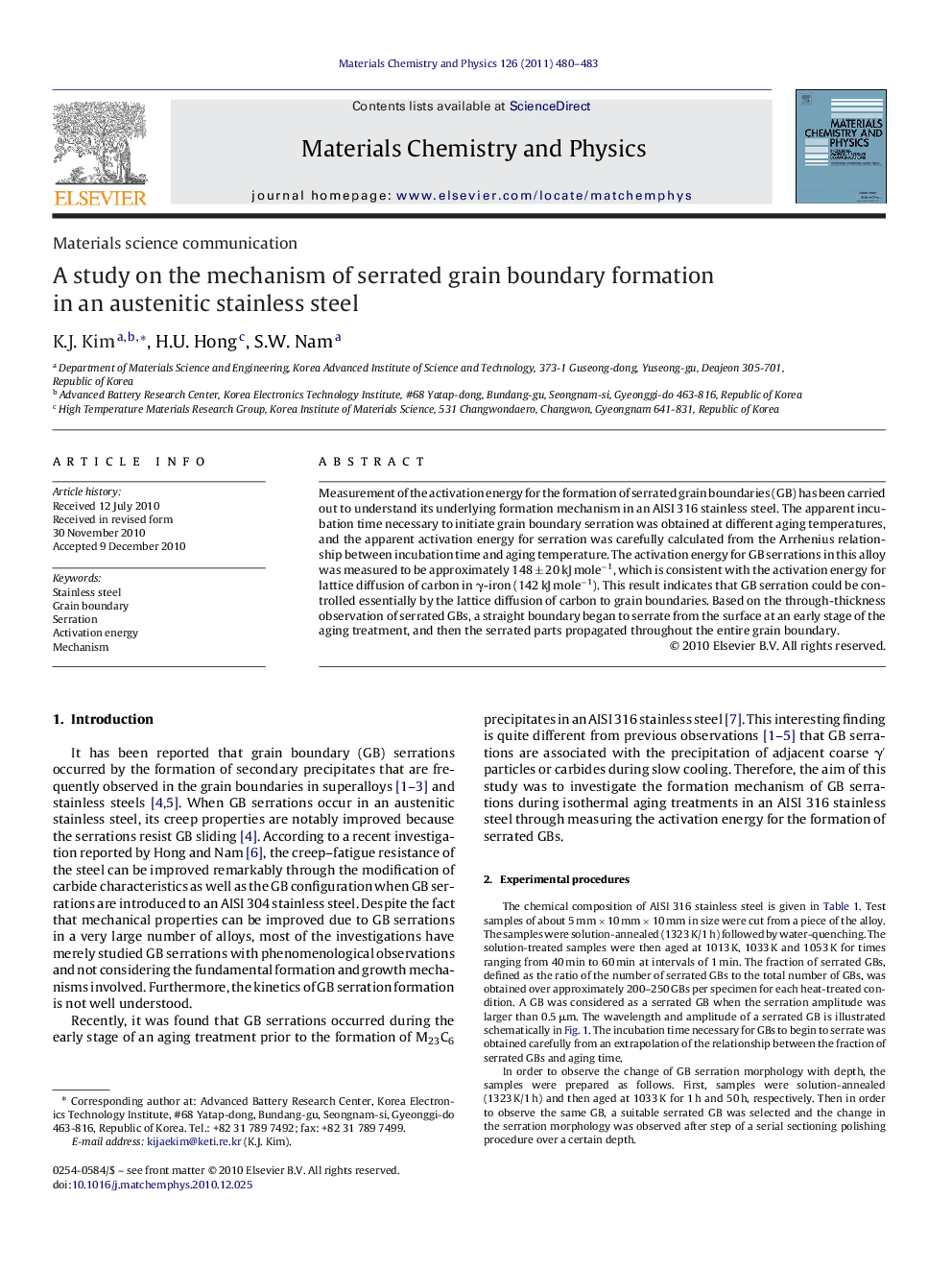| Article ID | Journal | Published Year | Pages | File Type |
|---|---|---|---|---|
| 1524922 | Materials Chemistry and Physics | 2011 | 4 Pages |
Measurement of the activation energy for the formation of serrated grain boundaries (GB) has been carried out to understand its underlying formation mechanism in an AISI 316 stainless steel. The apparent incubation time necessary to initiate grain boundary serration was obtained at different aging temperatures, and the apparent activation energy for serration was carefully calculated from the Arrhenius relationship between incubation time and aging temperature. The activation energy for GB serrations in this alloy was measured to be approximately 148 ± 20 kJ mole−1, which is consistent with the activation energy for lattice diffusion of carbon in γ-iron (142 kJ mole−1). This result indicates that GB serration could be controlled essentially by the lattice diffusion of carbon to grain boundaries. Based on the through-thickness observation of serrated GBs, a straight boundary began to serrate from the surface at an early stage of the aging treatment, and then the serrated parts propagated throughout the entire grain boundary.
Research highlights▶ Formation activation energy of serrated grain boundaries is 148 ± 20 kJ mole−1. ▶ The activation energy could be controlled by lattice diffusion of carbon. ▶ A straight grain boundary began to serrate from the surface. ▶ The serrated parts propagated throughout the entire grain boundary.
